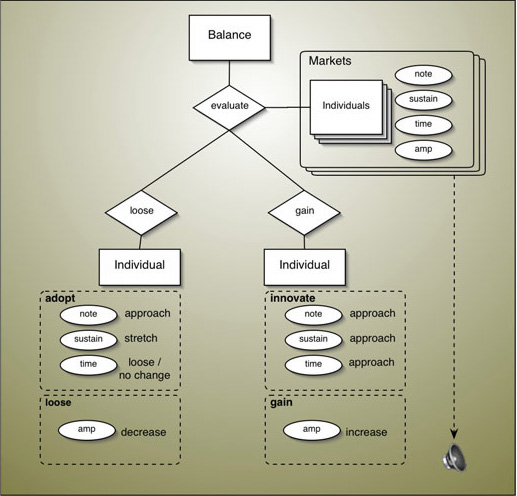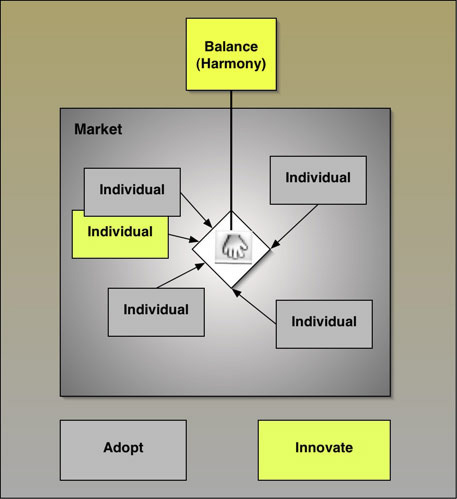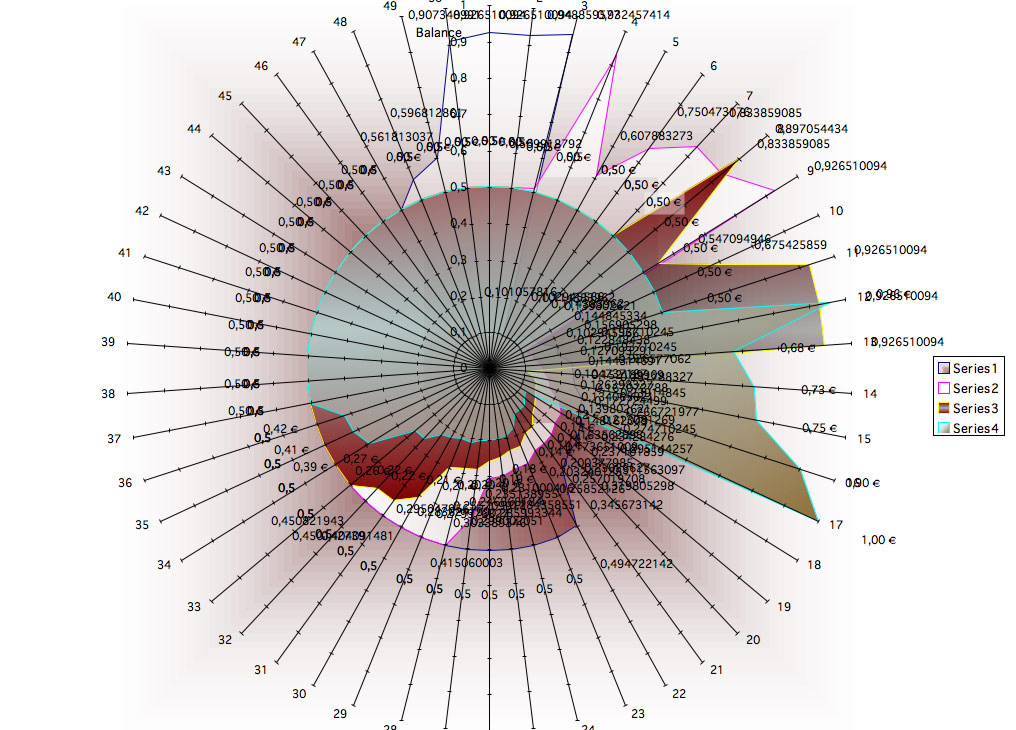Renate Wieser and Julian Rohrhuber
(1) theoretical paper
the publication is available at readme100.(2) sound installation: The Invisible Hand Machine
[auf deutsch]
For the piece "Invisible Hand Machine", we have developed a portrait of an economic model which implements a somewhat cartoonified, but serious functionality of a "free" market. Like maybe every cartoon, it exaggerates a mechanical model that ones mind produced as a description of how one sees the world. It poses the question whether its behaviour is emergent, and what this implies. The way it is coded, it realizes a paradox of liberty and points toward an ambiguity common to many models of self-regulation, computer models as well as social and economic theory.
Self-interest and competition, the basic forces of human society (according to those who believe this, which excludes the present authors), are realized as the strive for amplitude and adjustedness to time and frequency. A market consists of a swarm of short elementary sound grains (individuals) spread over both points in time and frequencies. These individuals compete against each other for fitness. (fig. 1) This fitness is objectified by a state of balance of each market, that consists in appropriate frequencies, note lengths and times. (fig. 2)
In a group of competitors, randomly chosen from their value class, the individual which is closest to a proper point in time (demand) will gain, the others will loose. Gaining means that it gains in amplitude, and may innovate, i.e. approaching the desired frequency and note length. Loosing means that it looses amplitude, and it has to adopt, i.e. approaching the desired frequency and stretching out in time. In a set of markets, the economy, this means that one part of the individuals slowly adopt to a soft melodic accompaniment, whereas the other (much smaller) part innovates and reaches the desired melodic form. The system asymptotically reaches balance over time, due to the marvelous workings of the invisible hand.
As Microsoft Excel has proved to be a tool of great explanatory value, we output the economic data to a program that keeps an Excel graph up to date [1]. This graphics illustrates the circularity and centeredness of economic equilibrium. (fig.3) The emphasis of perfection and purity in both graphics and sound will form the aesthetic background for a very linear storytelling which aims the audience to finally feel the "excellence of balance". Maybe after having outlived this purification, we can then get rid of it.
[1] we would like to thank Erich Pick for his help with this challenge.

fig. 1

fig. 2

fig. 3
